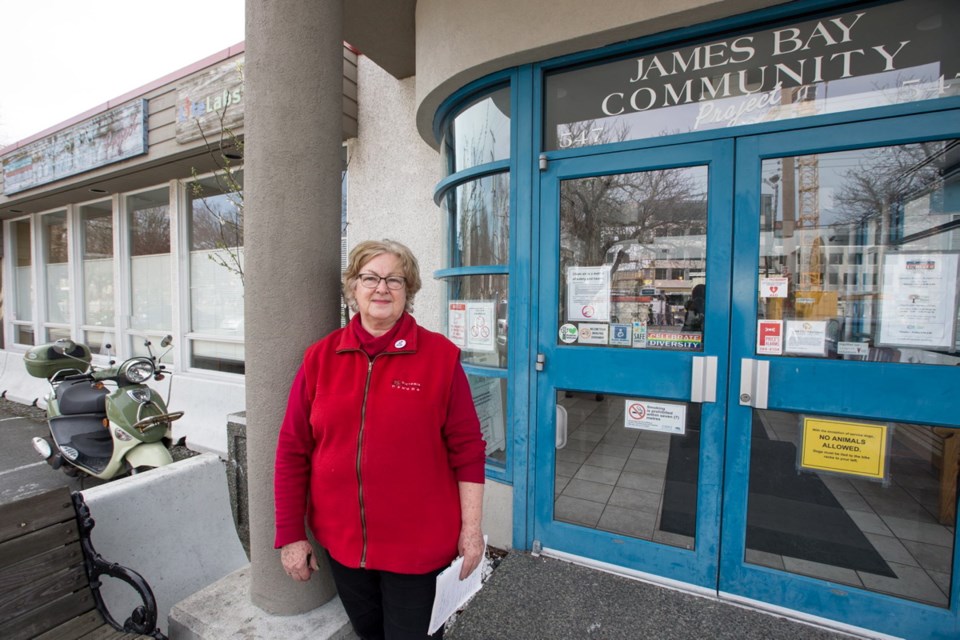The Victoria Health Co-operative says a family-doctor shortage has left it struggling to pay bills for the clinic, which serves 7,300 patients.
The non-profit has operated the Co-op Health Centre at the James Bay Community Project since 2010. It collects 32.5 per cent of doctors’ revenue from the B.C. Medical Services Plan to cover rent, office staff, electronic medical records and other administrative costs.
MSP rates include a portion accountable to overhead costs, which can range from 16 per cent for an extremely efficient practice to 50 per cent. Locums, who fill in for other doctors, expect to contribute 30 to 40 per cent of their billings to overhead, according to Doctors of B.C.
With two of six doctors reducing their hours for personal reasons, co-op chairwoman Vanessa Hammond said it’s hard to keep up with costs.
The co-op had an operating deficit of more than $11,333 in 2016, because it couldn’t find doctors to fill the gaps.
“The challenge is that our costs are fixed,” she said. “If there are fewer doctors or they have to reduce their hours, then revenue is less but costs stay the same.”
The co-op collects a one-time membership fee of $50 to support its other services, which include access to practitioners such as naturopaths, who are not covered by MSP, as well as community education. A recent example of that is a workshop on healthy nutrition on a tight budget conducted for groups at B.C. Housing and Our Place.
There are three health co-operatives in Greater Victoria, including the Rainbow Health Co-operative which serves the transgender community, as well as one in Duncan and one in Cedar.
The co-op can’t ask patients at the clinic to pay membership fees. That is prohibited by the Canada Health Act, and Hammond said she’s frustrated that few patients have contributed voluntarily. The clinic’s patient load has grown by 2,300 since the co-op took over in 2010, but the co-op has only about 500 members.
Still, Hammond is optimistic relief will come. The board is in talks with a doctor interested in moving from another province in June. It also recently hired an internist, who can take on more complex and chronic patient cases, and it has a proposal in the works for a nurse practitioner.
“If all of those things work out, we’re fine. But in the meantime, there’s this horrible gap of April-May-June,” Hammond said.
“We have enough things going and we’re stubborn and determined enough [as a board]. What we want to do is keep going. But like any business … if costs are higher than revenue, at some point, you give up.”
In 2015, 16.8 per cent of Canadians 12 years or older said they did not have access to a regular medical doctor, according to statistics released last week by the Canadian Community Health Survey. That’s up from about 15 per cent in 2014.
Dr. Alan Ruddiman, a family doctor and president of Doctors of B.C., said several factors are at play. The population is living longer with chronic and complicated illnesses, such as diabetes and heart disease, which means demands for each patient are rising. There aren’t enough young doctors to replace those retiring. And work culture has shifted so that younger doctors are demanding more regular hours and work-life balance, compared with older generations who were on call around the clock, he said.
“We’re graduating about 300 family doctors in our province every year, but the demand calls for 450 to replace those who are retiring or moving away,” Ruddiman said.
“We’re not keeping pace with attrition in the physician workforce.”
Places such as Victoria also attract retirees, who might have more health demands, while young doctors might want a more affordable place to live.
The co-op model is uncommon in B.C., where most doctors own their own practice, share a practice with a group of doctors or work at a walk-in clinic.
Ruddiman said trouble paying the bills is not a common problem, although expensive rent and real estate mean more doctors are working together.
“The days of a family doctor being a solo doctor in a clinic on his or her own, who employs two to three staff members, I think those days have come and gone because real estate is expensive, particularly in urban areas,” he said.
A shortage of doctors in 2011 prompted the Pacific Rim Health Services Co-operative to close its clinic in 2012.



